Succulent Growth Rate: A Quick Guide
Are you curious about how fast succulents grow? Well, you’re in for a treat! Succulents are these amazing plants that seem to defy the laws of nature with their unique abilities. Imagine plants that require minimal attention, can survive in extreme conditions, and grow at their own pace. In this blog, we’ll dive into the fascinating world of succulent growth. We’ll explore the factors that influence their speed, discover some surprising growth techniques, and maybe even debunk a few myths along the way.
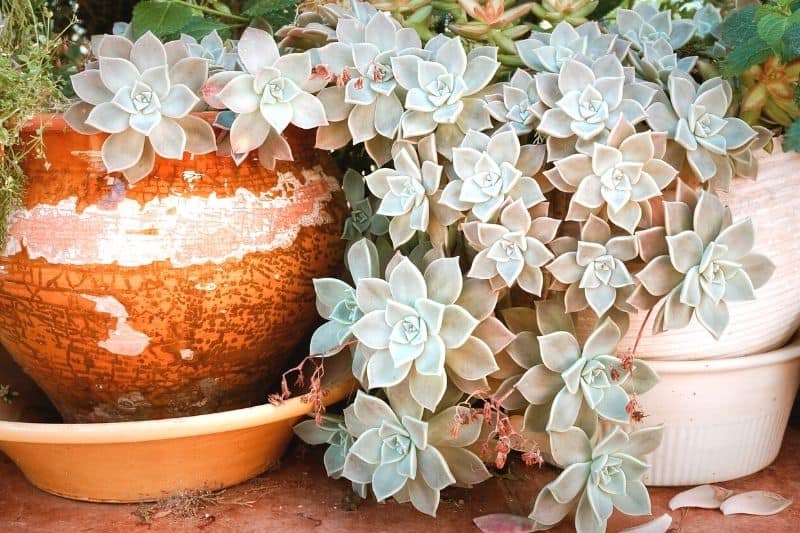
Contents
How Fast Do Succulents Grow?
One of the most common questions people ask about succulents is how quickly they grow. Well, the truth is, there’s no one-size-fits-all answer. Different types of succulents have different growth rates.
Some succulents might show visible growth in just four to six weeks, while others take a bit longer, and you might not even notice their growth right away.
Compared to other plants, succulents often take their time to reach their full potential. But here’s the interesting part: even among succulents, some grow faster than others. It’s like a race where each contestant has its own pace!
Read also:
How Big Do Succulents Grow?
5 Tips on How to Make Succulents Grow Faster
Now, while there’s no secret potion to make succulents grow faster, there are things you can do to create an environment that helps them thrive and grow at their own speed. Here are five handy tips:
1. Choose the Right Pot
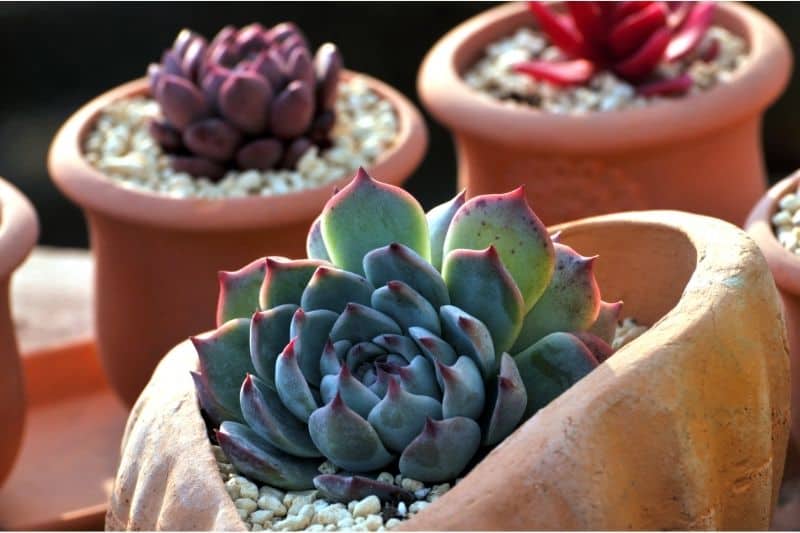
When it comes to picking a pot for your succulent, opt for one that allows proper airflow and drains water effectively. Terracotta pots are great for this purpose. Oh, and don’t forget to check if there’s a drainage hole at the bottom; this prevents water from pooling and causing root rot.
As your succulent grows bigger, you might need to give it a roomier pot. It’s like upgrading to a larger house—not only does it give your plant more space, but it also encourages it to spread its roots and grow.
2. Water with Care
Succulents are smart survivors—they don’t need a lot of water to thrive. These special plants have a nifty water-storage system that helps them survive in the desert. So, instead of drowning them with excess water, follow this rule of thumb: only water your succulent when its soil is completely dry. Overwatering can lead to root rot and cause trouble for your little green buddy.
3. Time to Separate
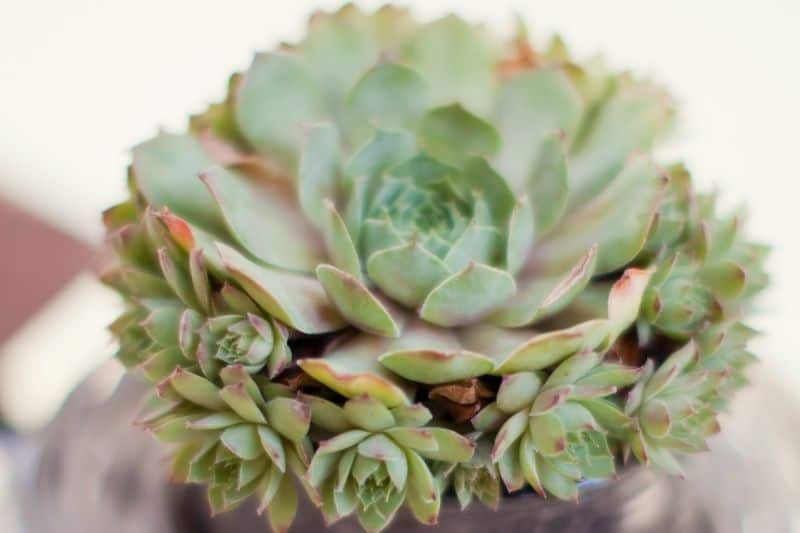
No matter if your succulent grows at a snail’s pace or sprints ahead, it’ll soon start producing baby plants called offsets. These tiny offshoots can be a new generation of succulents on their own. However, if they keep crowding the pot, the parent plant won’t have enough space to flourish.
Not only that, but offsets also compete with their parent for nutrients. To give your main succulent the best chance to thrive, make sure to remove these offsets regularly.
4. Plant in Special Soil
Getting the right soil is crucial for any plant, and succulents are no exception. They prefer a soil type that allows good airflow and drains water effectively. Luckily, you can find pre-mixed soils specifically designed for succulents and cacti at your local gardening store. It’s like having a customized diet for your plant!
5. Light and Fresh Air
Just like different people have different preferences, different succulents have various lighting and airflow needs. Some succulents love to bask in the indirect sunbeams of indoor spaces, while others crave heaps of direct sunlight and fresh air. The key here is to learn what your particular succulent species enjoy and adjust the lighting and airflow accordingly. It’s like providing the perfect setting for a star performer.
Types of Fast Growing Succulents
Ready to meet some fast-growing succulents? These plants put the pedal to the metal when it comes to growth, transforming into tall beauties in just a matter of weeks. Let’s take a look at a few fascinating examples:
Aloe
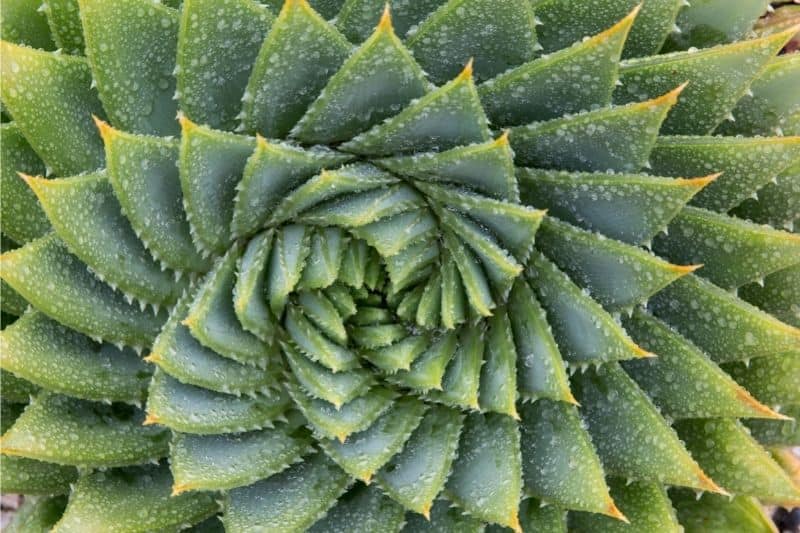
Aloe is like the boss of succulents, with over 500 varieties to its name. Some aloe plants grow faster than others, making them perfect for your succulent garden. You’ll be amazed to see their visible growth in just a few months, even though it may take a few years for them to reach full maturity.
Blue Rose
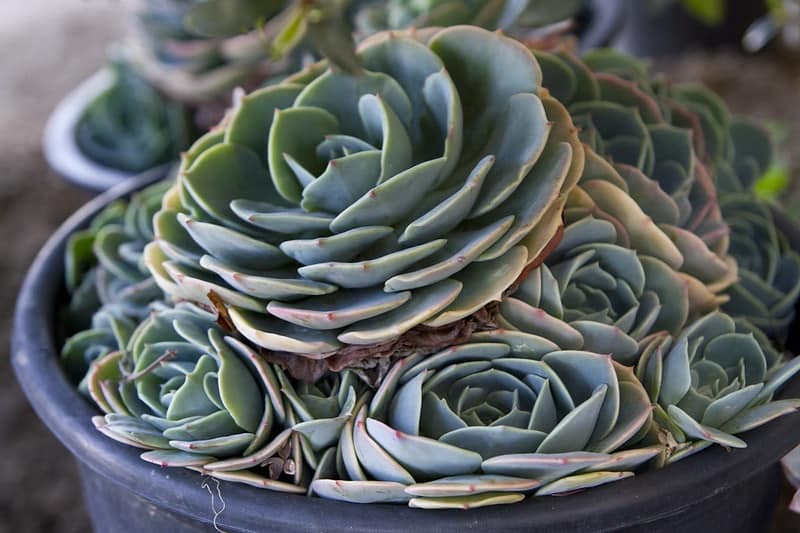
The Blue Rose succulent is a real showstopper. Its captivating geometric pattern of leaves resembles a rose in shape, creating a unique and beautiful look. Keep an eye out for rosettes that sprout at the base of the plant—they can easily be propagated to create more Blue Rose succulents. With silver-blue leaves, this succulent truly lives up to its name.
Dragon’s Blood Stonecrop
The Dragon’s Blood Stonecrop is a resilient succulent that shoots out leaves by the hundreds. You’ll be amazed at how fast this plant grows! These hardy succulents thrive in direct sunlight, turning their leaves into a stunning rose-red shade. It’s like a fiery dragon guarding your garden.
Others
There are plenty of other fast-growing succulents to explore, like Crassula, Rock Purslane, Resin Spurge, Mother of Thousands, Graptoveria, and more. These gorgeous plants are not only easy to care for, but they also multiply rapidly. Some of them make excellent ground cover with their abundant growth.
Types of Slow Growing Succulents
In contrast to their speedy counterparts, slow-growing succulents take their time to reach their full potential. Here are a few beautiful succulents that grow at a more leisurely pace:
Gasteria
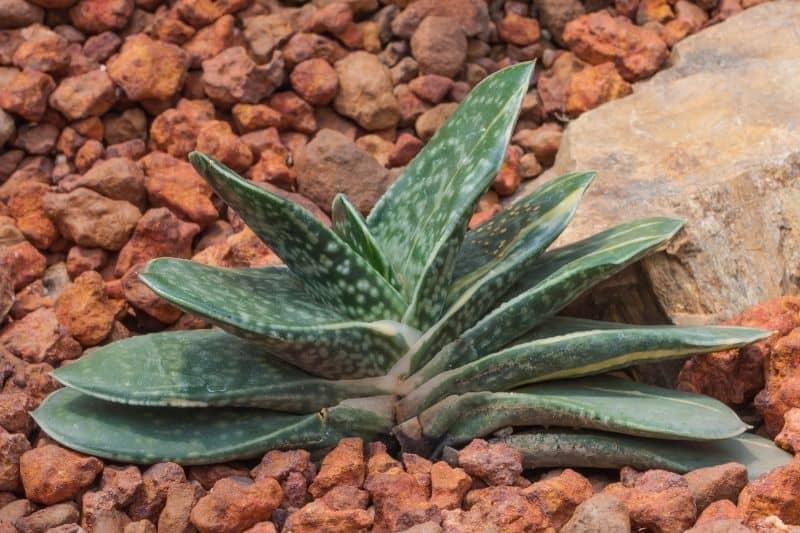
Gasteria sports unique tongue-shaped leaves and gets its name from the stomach-shaped flowers it produces. This slow grower might require some switching between indoor and outdoor environments. It also prefers minimal watering, making it an independent little plant.
Haworthia
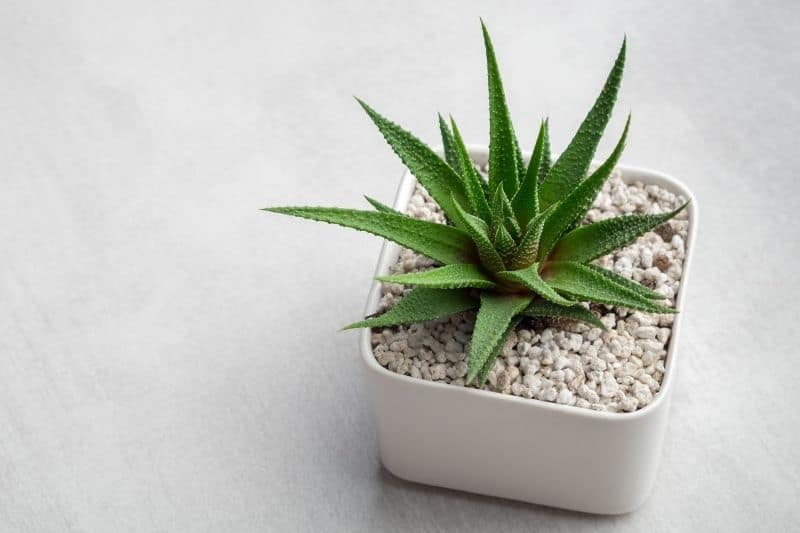
Haworthia is a petite and adorable succulent that takes its time to grow. Since it doesn’t grow too quickly, you can keep it in a small pot without worrying about its roots getting cramped. This charming succulent requires a bit of extra care, but it’s worth the effort when it thrives.
Air Plants or Tillandsia
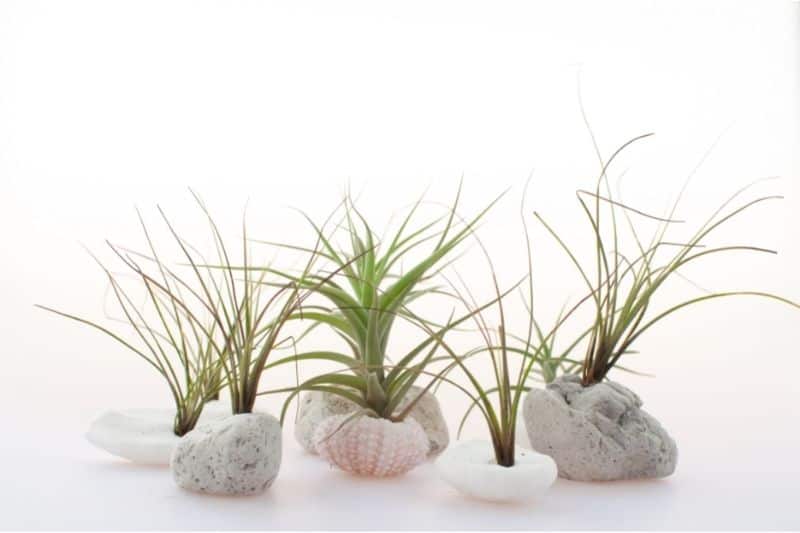
Air plants, true to their name, absorb moisture from the air rather than the soil. They have nifty scales on their leaves that help with this unique process. Air plants grow best from seedlings rather than offsets, but be patient because it can take a year or longer for them to fully sprout. These plants don’t blossom frequently, but they’re still quite fascinating.
Others
There are a few more slow-growing succulents worth mentioning, such as Crinkle Leaf Plants and Living Stones or Lithops. These plants bring a sense of uniqueness to any collection, but keep in mind that they may require a mix of indoor and outdoor time to thrive.
When Succulents Grow Too Fast
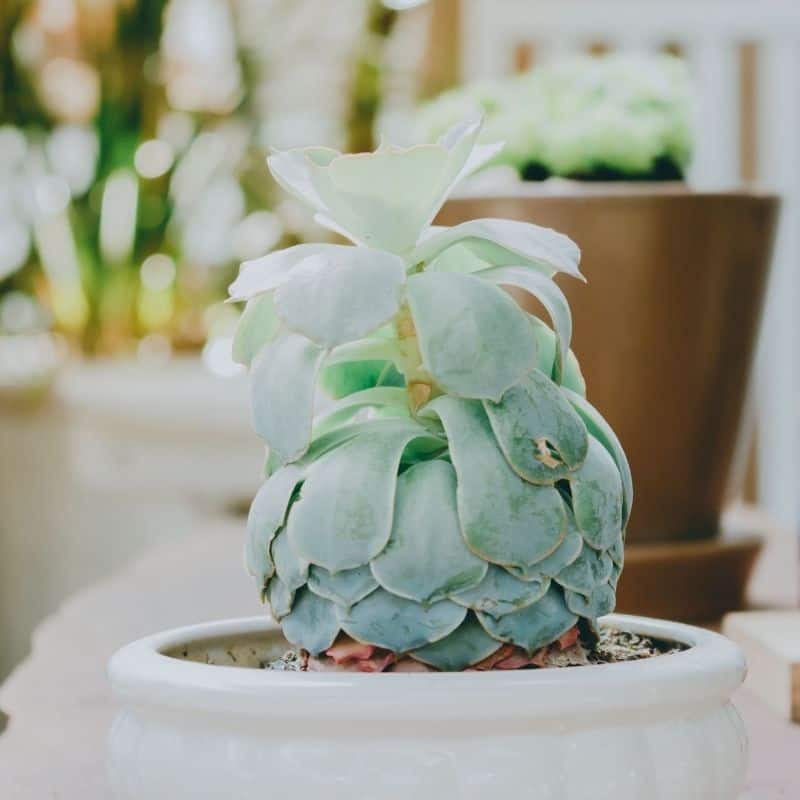
If you notice your succulent growing at a rapid pace, it might be a sign of “stretching“. This happens when the plant doesn’t receive enough light and starts reaching towards the nearest light source. This process, called etiolation, leads to long, weak stems and yellowing of the plant.
To keep your succulents from growing too tall and weak, provide them with ample natural light. Each succulent has its own lighting requirements, so finding the right balance for your plant will support healthier growth. Remember, a happy succulent is a well-lit succulent!
Frequently Asked Questions
How long does it take for succulents to grow?
Succulents have their own pace of growth, which can vary depending on the species and growing conditions. Generally, succulents are slow growers, taking several months to a year to reach maturity. Some species may even take up to three years. Factors like well-draining soil, sunlight, regular watering, and fertilization contribute to their growth. By providing the ideal conditions, you can help your succulents grow quickly.
Why are my succulents growing so slowly?
There could be a few reasons why your succulents are growing slowly. Insufficient lighting, irregular watering, poor soil quality, and lack of fertilization may impact their growth. Different types of succulents have different growth rates too. To ensure healthy growth, give your succulents adequate sunlight, water, and nutrients based on their specific needs. Making adjustments to address these factors can help your succulents flourish.
What is the fastest way to multiply succulents?
The quickest way to multiply succulents is through propagation. This involves taking cuttings from existing plants and allowing them to root in soil or water. Depending on the succulent type, this process can take a few weeks to a few months.
How long does it take a succulent to grow to full size?
The time it takes for a succulent to reach its full size varies depending on the type. Generally, it can take anywhere from three to five years for a succulent to reach its maximum size.
Can you speed up succulent growth?
Yes, you can speed up succulent growth with a few strategies. Providing adequate light is crucial as succulents need 4 to 6 hours of direct sunlight daily. Insufficient light can slow down their growth. Proper watering is also important—waiting for the soil to completely dry before watering again prevents overwatering and promotes healthier growth. Using well-draining soil helps avoid root issues and gives succulents the best chance to thrive.
Final Thoughts
Succulents are great plants to have in your home or garden due to their toughness and ability to withstand different conditions. Whether they grow slowly or quickly, caring for succulents can be a rewarding experience. Just remember to cater to their specific needs, and you’ll have beautiful succulents brightening up your space.
